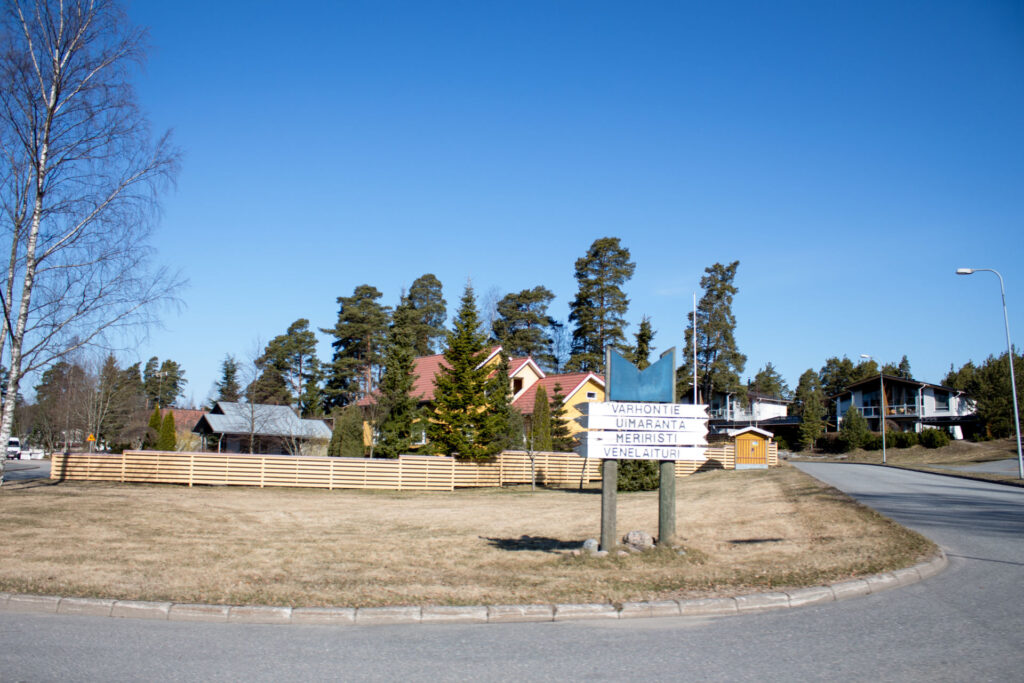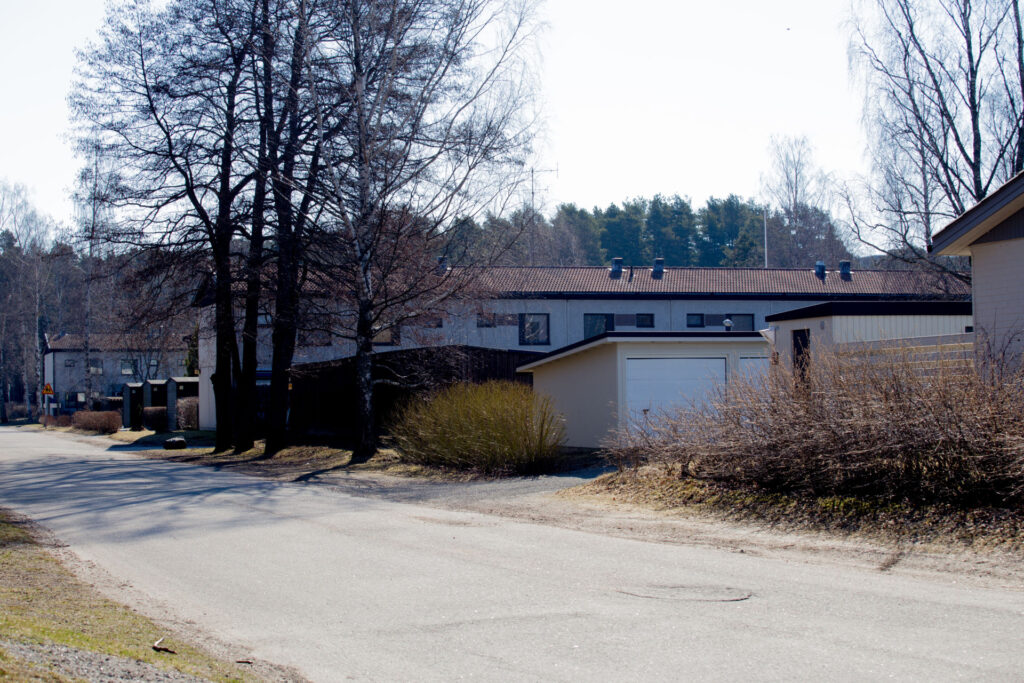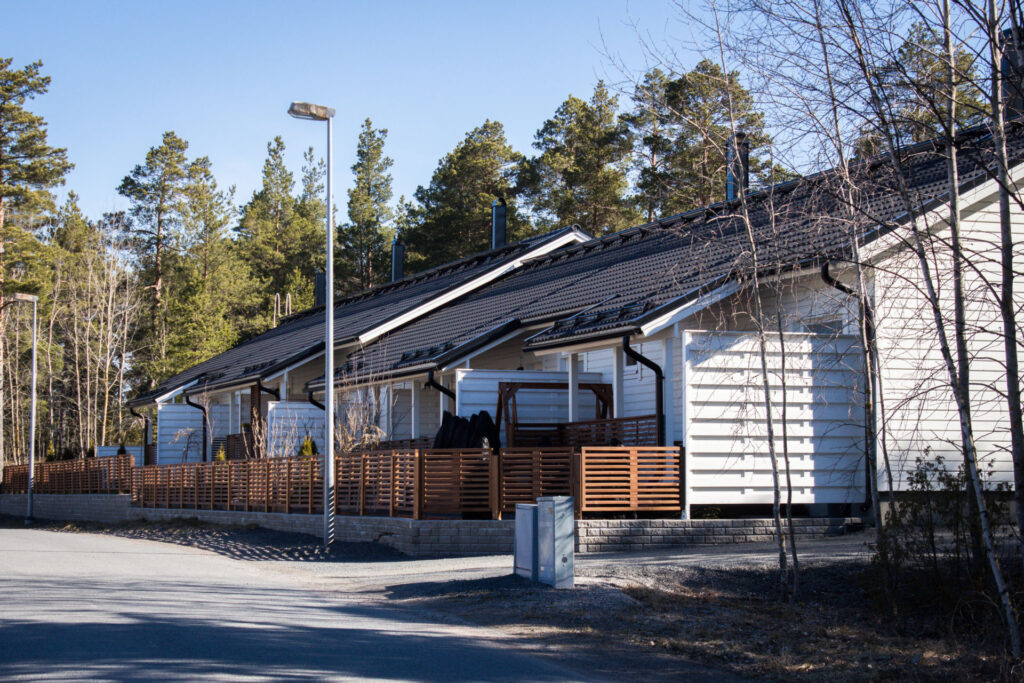Northern Areas

Haapasaari
Haapasaari is a district in the northern part of Rauma, with loose, rural housing.
The valuable setting of Vanha-Lahti Manor, which used to be a royal stables, the former Lipsanen Manor, is still used as a private horse boarding and training stable.
Haapasaari was still an island at the turn of the 1700s and 1800s, but today it is very much part of the mainland. A water area consisting of Nurmenlahti, Myllysalmi and ditches surrounds the area of Hapasaari proper, but the sea lingers on the northern and western shores.

Kaaro
Kaaro is located between the city centre and the village areas (Haapasaari-Sorkka). The area is a quiet, single-family residential area, close to Lake Kaarojärvi and with good outdoor recreation opportunities in the surrounding wooded areas, including the Latumaja trail.
Kaaro is a large mix of urban and rural settlements. The population of Kaaro has grown considerably in recent years: in 1999 there were about 340 households in Kaaro, today there are more than 500 households. Settlement has expanded, particularly in the southern part. Until the beginning of 1993, Kaaro was part of the rural municipality of Rauma.
Kappelinluhta
Kappelinluhta is located in the northern part of the city and is well connected to the city centre, just over 2 kilometres away, along Luoteisväylä. The area was built in the 1980s, and has a high concentration of detached and terraced houses. The residential area is intersected by a good pedestrian network and is well connected to the nearby Lake Pyytjärvi recreation area.
There is a kindergarten on Uudenlahdentie and a new school on the north side of Pohjoiskehä. There is an S-market near the junction of Pohjoiskehä and Luoteisväylä. The area is named after finnish animals.

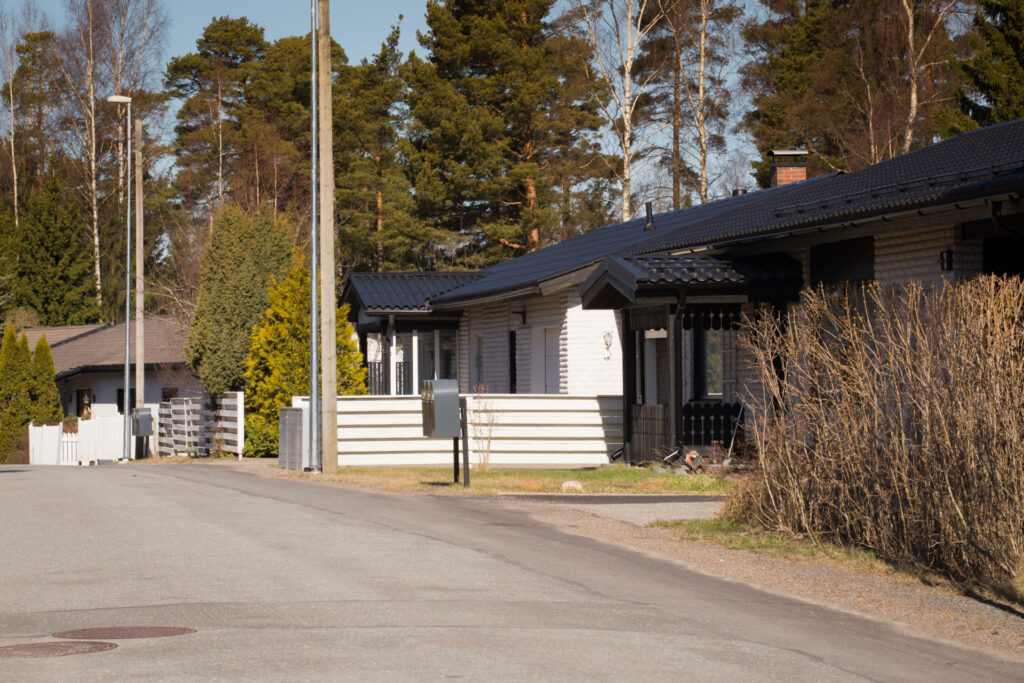
Kinno
Built in different decades (from the 1920s to the present day), the charming and diverse Kinno residential area is less than 2 km from the city centre.
Pyynpää kindergarten, pre-school and Raumanmeri primary school, artificial ice rink, library and dental clinic are located nearby. The nearest commercial services are about 1.2 km away.


Vesiniittu
The Vesiniittu area to the east of Kinno is a dense and interesting street space area built in the late 1980s. The street spaces are bordered not only by residential buildings but also by sheds, canopies and covered gates. The courtyards are sunny and sheltered from the wind and the view. The area is coherent on the one hand, but varied on the other.
Vesiniittu is the first residential area in modern-day Rauma to aim for a compact street space, modelled on historic urban spaces.
Pirttialho
Pirttialho was built in stages in the 2010s. Part of the area has not yet been zoned. The first section consists of two curved streets on a rocky hill. The most beautiful and easily traversable cliffs have been excluded from the development. The houses are located close to the street and the courtyards mainly border the park. Most of the houses are 2-storey. The area has become a pleasant and integrated residential area in terms of urban design.
The newer section on the southern edge of Pirttialho has mainly 1-storey houses.
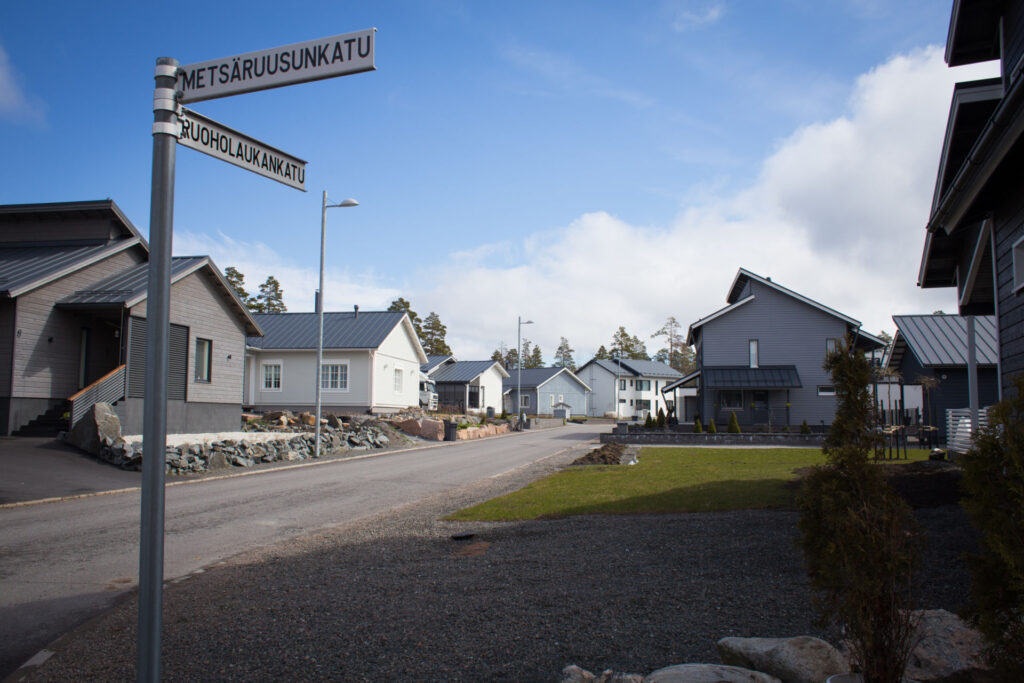
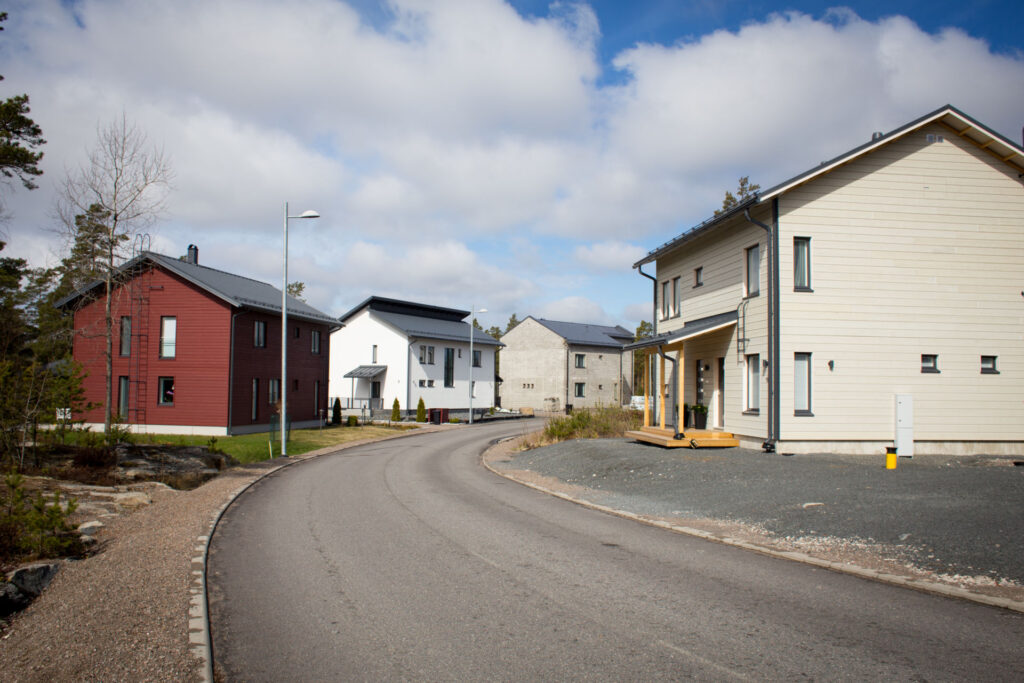
Pyynpää
The Pyynpää area is located north of the railway line, about a kilometre from the city centre, and even less by foot. The market area is nearby.
The area is built on the edge of recreational areas and has an important light transport network and good connections to wider green spaces in the north-east of the city.
The Pyynpää school centre with its services, Pyynpää kindergarten, pre-school, Pyynpää school and Raumanmeri primary school, artificial ice rink, library and dental clinic are also nearby.
The nomenclature of the area refer to Rauma’s twin towns: Nestvedinkatu, Kaposvarinpuisto.
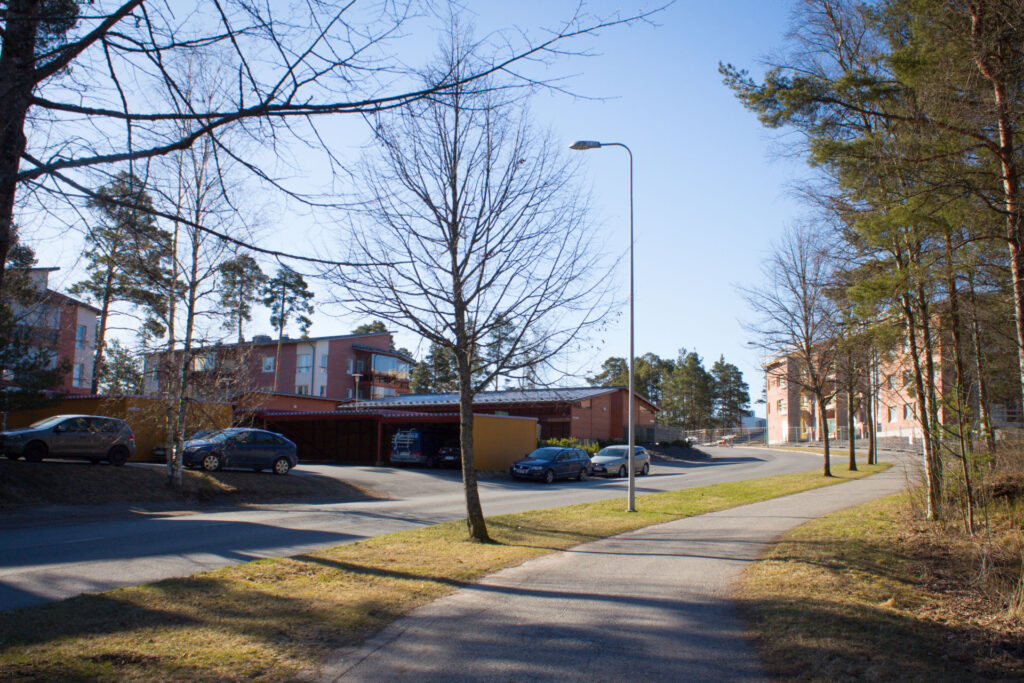

Silikallio
Silikallio is one of the newest residential areas in Rauma. Silikallio, along Sammalhuoneenkatu, is a coherent, single-family house complex that was the result of a quality competition. The competition was won by the nom de plume Reelinki, backed by Westwall Oy, Jyrki Westerberg and Arkkitehtitoimisto Timo Tuomola Ky. Reelinki is a group of connected buildings that represents a newer residential development of high quality, both in terms of urban design and architecture. The buildings form a comfortable and functional ensemble.


Sorkka
Sorkka has a rural settlement and a compact village centre of national importance. The forests of Sorkka are characterised by steep diapasonal cliffs.
The fjord like Gulf of Sorkanlahti was settled a long time ago. The story goes that the first settler saw a long bay and a good place to build a house for himself and his animals. He shouted: ”On däsä sorka sia”! (Here’s a site for pig’s trotters!). This is how the village is said to have originated and got its name.
Settlement increased and houses were built next to each other. It is said that they were so close to each other that the mistresses passed a cup of coffee from window to window. Traditional building methods and materials are also respected in new construction.


Syvärauma
Over more than a hundred years, the Syvärauma square pattern has developed into a varied but harmonious whole. To the south of the area is Rauma’s largest small marina, Syväraumanlahti.
Clustered along straight streets, the housing stock of the Syvärauma housing estate covers all decades of the 20th and early 21st centuries. The houses in the area reflect more than a hundred years of suburban housing in Rauma.
Syvärauma is a former rural municipality, which was annexed to the city of Rauma in 1954. Syvärauma consists of old free-standing hillside and coastal settlements, organised settlements in accordance with the building plan and new housing stock in accordance with the town plan. The buildings also vary in size and composition.


Tuomoniemi
The Tuomoniemi residential area near the sea was built in the 2000s.
The houses in the area are typical of the suburban housing construction of the turn of the 1900s and 2000s. The houses are 1 and 1½ storey, boarded, rendered and brick. The area is built block by block in a uniform pattern. The maritime character of the area is reflected in its nomenclature.


Uusilahti
Uusilahti is located in the northern part of the city and has good access to the city centre via Luoteisväylä. The distance to the city centre is about 3 km. The area was built in the 1990s; mainly single-storey detached and terraced houses.
The residential area has a good light transport network and is well connected to the Lake Pyytjärvi recreation area.
There is a kindergarten along Uudenlahdentie and a new school will be built on the north side of Pohjoiskehä. There is an S-market near the junction of Pohjoiskehä and Luoteisväylä. The naming convention is based on the lace-stitching vocabulary.


